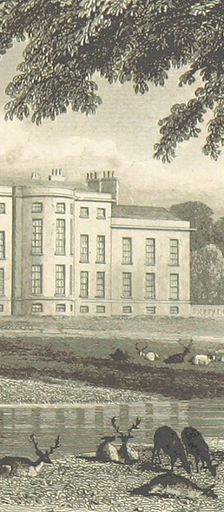Livermere Hall and Park
Demolished in 1923, Livermere Hall was built in the early-eighteenth century to replace the earlier Broom Hall on another site within a new landscape park in both Great and Little Livermere parishes. Existing meres were enlarged and linked to form lakes, with plantations developed. The village of Little Livermere was moved out of the park leaving just the parish church, now in ruins, and a seventeenth century farm within it. At the same time William Kent designed the southern parkland, kitchen garden and pleasure grounds on the moated site of the demolished Broom Hall close to the village of Great Livermere. Later alterations to the mansion have been attributed to the architect Samual Wyatt and in 1791 Humphrey Repton produced a Red Book with his recommendations for alterations and additions within the park, many of which were implemented. In 1815 Lewis Kennedy, a London nurseryman known for his picturesque designs, was consulted on further alterations to the park and pleasure gardens surrounding Livermere Hall. At the beginning of the twentieth century Livermere Hall and Park were sold to the owner of Ampton Hall and soon after the mansion was demolished. After World War II the parkland became arable fields leaving just the lakes, plantations, a sweeping through-drive with surviving lodges at both ends, a much diminished kitchen garden and a rough area of shrubland where the mansion and its pleasure gardens once stood.
Not open to the public except on public footpaths that cross the site near to the lakes and mansion site.
Livermere Hall and Park Read More »
Great Livermere Parish Little Livermere Parish
